How to Make a Subway Map with John Tauranac
Hear from an author and map designer who has been creating maps of the NYC subway, officially and unofficially, for over forty years!


After more than forty years, Franklin D. Roosevelt Four Freedoms Park on the southern tip of Roosevelt Island will finally come to fruition, almost exactly as architect Louis I. Kahn envisioned it. Over the years, economic crises and political sensibilities have halted progress on the park, which first got underway in 1973. Untapped took a tour of the Four Freedoms Park construction site with the executive director of the project, Gina Pollara. Ms. Pollara is more than a director–she is the heart of the initiative. Her dual passion for the design by Kahn and for the democratic ideals promulgated in FDR’s Four Freedoms Speech has turned the park into a reality. Trained as an architect at Cooper Union and the editor of Water-Works: The Architecture and Engineering of the New York City Water Supply, Ms. Pollara switches with ease between conveying the history of Roosevelt Island and discussing the intricacies of quarry rock.
Almost a year before the attack on Pearl Harbor, FDR articulated the Four Freedoms–freedom of speech and expression, freedom of worship, freedom from want, and freedom from fear. But these were not freedoms just for Americans. FDR emphatically added the words “everywhere in the world” after each freedom, anticipating America’s necessary involvement in an increasingly globalizing and fraught world. Today, the United States is often portrayed as a meddlesome neighbor, injecting its ideals into places that no longer welcome or esteem its presence. But the United States actually has a longer history of isolationism, first declared by George Washington in his Farewell Address, reinforced by the Monroe Doctrine in 1823, and maintained until WWII (apart from involvement in World War I). The global scope of the Four Freedoms was thus a remarkable departure from almost 150 years of American policy. The tenets of the speech were later included in the charter for the United Nations, following WWII.

We crossed from Manhattan to Roosevelt Island on the tram that departs from 60th Street and 2nd Avenue, accessible via Metrocard. The tram has been in operation since 1976 but new sleek cars built by Poma were installed in November 2010. For many New Yorkers, the mystique of the new park will come from the abandoned smallpox hospital that will sit at the center, but public fascination with decay sometimes overlooks the non-physical history of a place. Roosevelt Island was first settled by the Dutch in 1637. As the island changed hands from Dutch to English to American, it subsequently underwent the necessary nomenclature changes–from Manning’s Island to Blackwell’s Island to Welfare Island. The latter name hints at the island’s functional role in New York City’s history–as a location for prisons, a lunatic asylum, and a smallpox hospital. French theorist Michel Foucault called such places “heterotopias of deviance and crisis,” enclaves created by society to manage those who fall out of the norm. This city is full of these spaces: Rikers Island is the main prison facility for New York, the abandoned North Brother Island (just west of Rikers Island) treated those with leprosy, venereal disease and drug addiction. Although the older facilities on Roosevelt Island were abandoned in the 1950s and 60s as the philosophy on medical treatment shifted from isolation towards rehabilitation, the island as a whole maintains its medical heritage with several hospitals and nursing facilities still in operation. Ms. Pollara sees this as an inherent educational tool, as “children grow up seeing the disabled as a natural part” of life.
The tour began in Southpoint Park, an area immediately north and adjacent to Four Freedoms Park. Southpoint Park, which includes the smallpox hospital and a laboratory, is being developed by the Roosevelt Island Operating Corporation. When completed, its meandering hilly landscape “will provide a beautiful counterpoint to Kahn’s formal symmetrical design,” according to Ms. Pollara. The first stop on our visit was the Strecker Memorial Laboratory, which was repurposed as an MTA substation and rehabilitated in the mid ’90s. The granite gneiss stone retaining walls you see in the photographs below were built out of the ruins of the old city hospital.
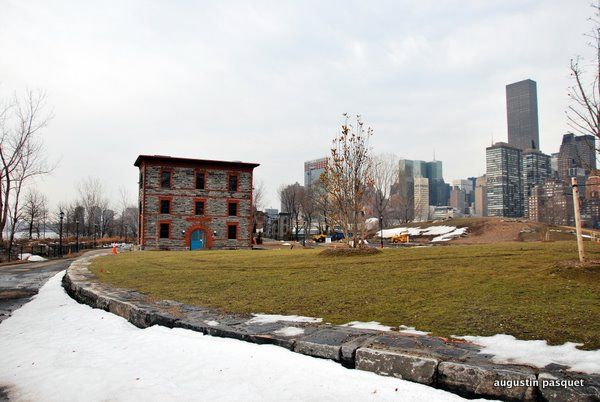

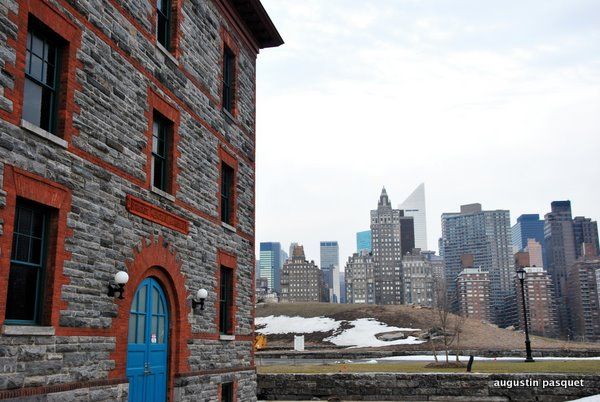
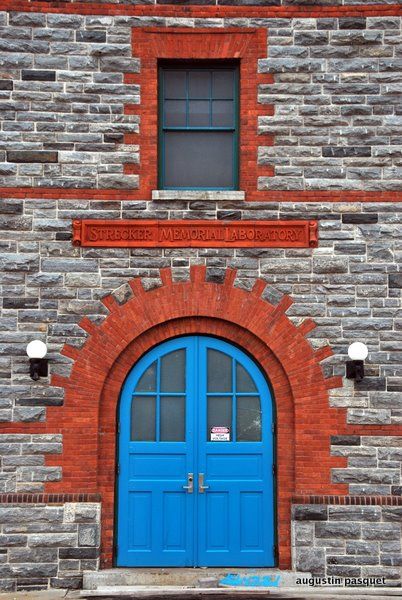
After the laboratory, the road bends and the ruins of the smallpox hospital emerges. The building was designed by James Renwick and is a landmarked ruin. It will remain untouched until additional funds can be acquired to provide critical structural support and rehabilitation.

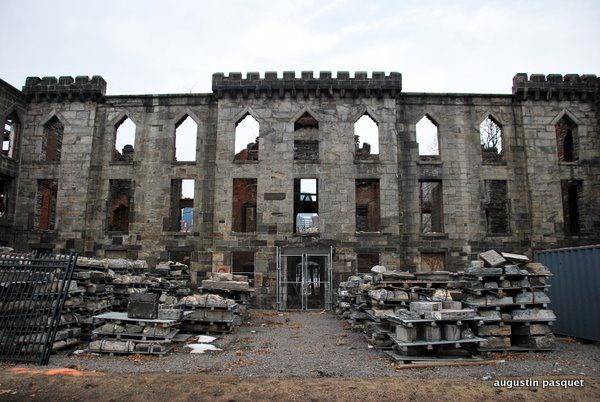
At the entrance to Four Freedoms Park, we stopped by the site office for Sciame, the construction firm building the park. We picked up our hard hats and looked at some sketches for the park:

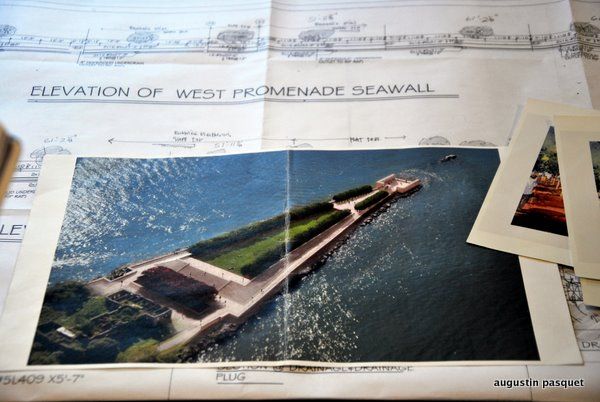



We then checked out the main area of the memorial. Here is Ms. Pollara checking out the latest work, with the backdrop of Long Island City and the famous Pepsi-Cola sign:
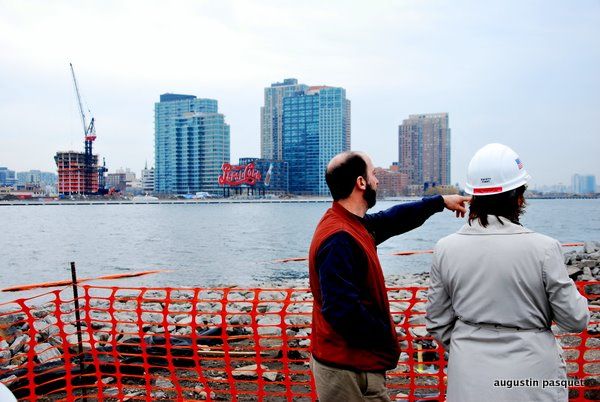
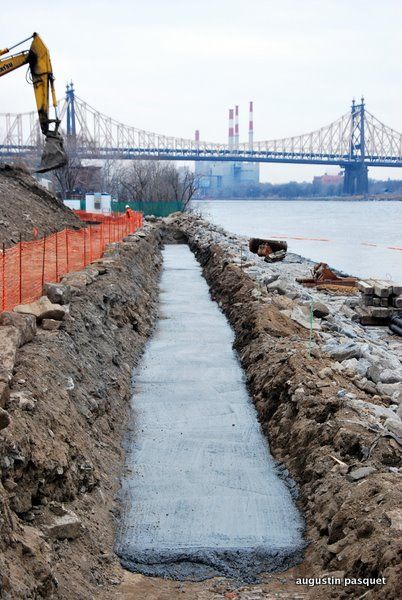
New trees getting ready to be planted:
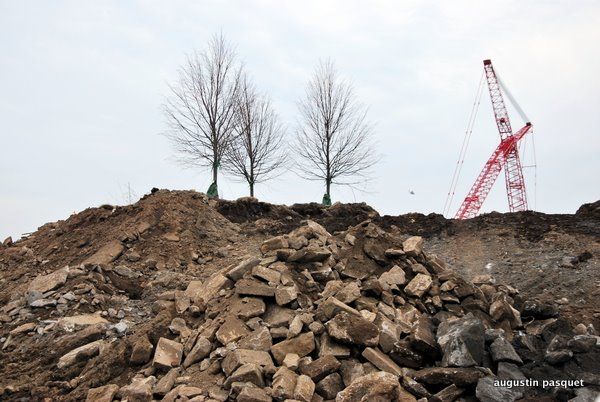
The Manhattan skyline serves as a striking backdrop and a reminder of how close, yet far, the prisoners and hospital patients were kept from society:

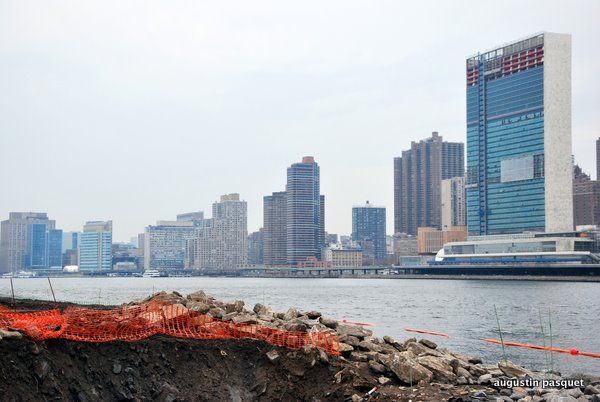
Along the way, Anthony Turturro, the site supervisor for Sciame, found a piece of old brick. I did some research later and found that it’s a roofing tile by the Ludowici-Celadon Tile Company, who created the terra cotta dome of what is now City Center, as well as military installations like Pearl Harbor.
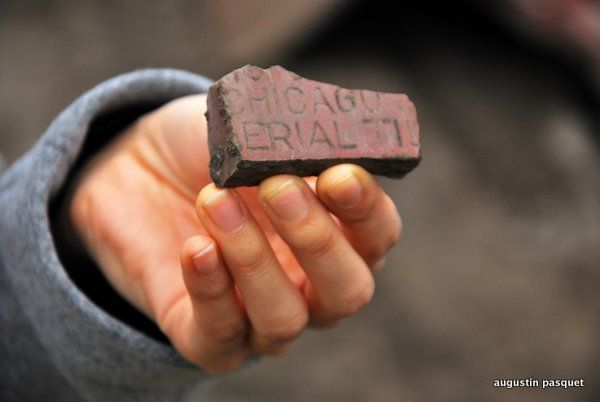
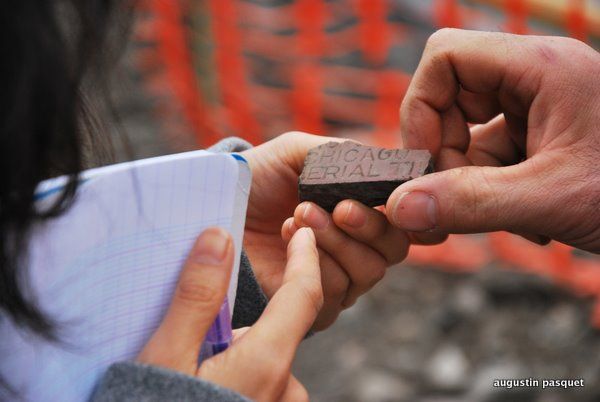
We also came across old floor tiles, likely from the old hospital that was demolished:

We then approached the front facade of the smallpox hospital:
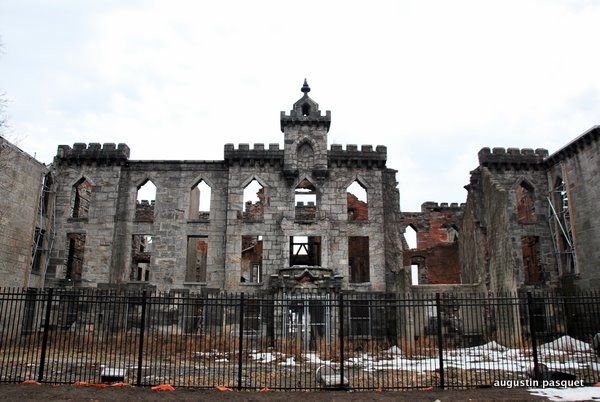

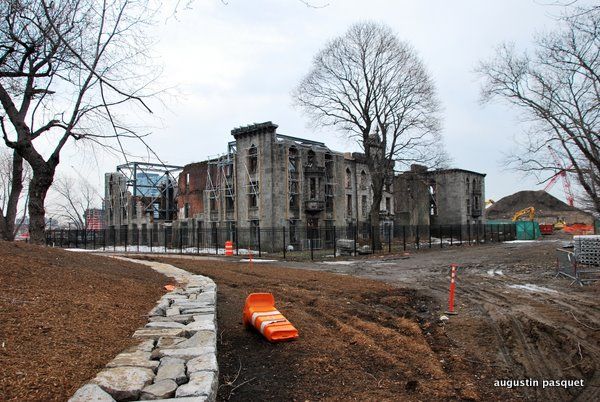
This shot gives you a sense of the topographic work that is being done for the park:

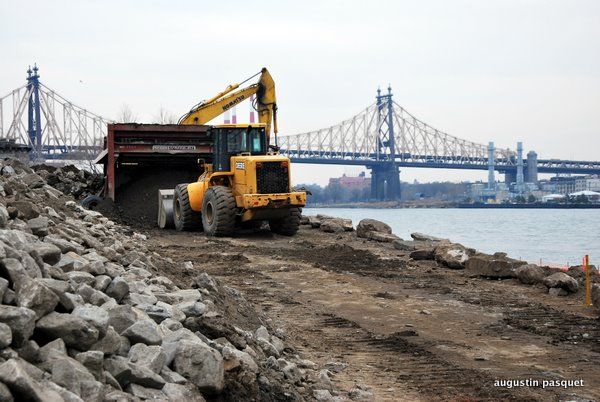
The memorial itself will play on the perspectival nature of the southern tip of Roosevelt Island, with an elevated tree-lined park that narrows downwards towards a large memorial statue of FDR, culminating in a structure called “The Room,” built out of 6ft x 6ft x 12ft granite blocks submerged into the river. Here are some of the blocks, which were dropped off to the island by barge:
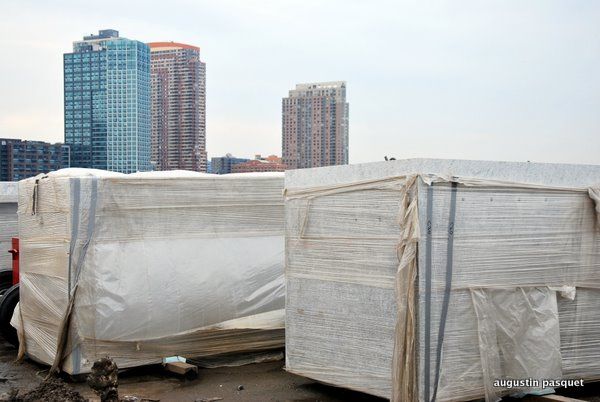

Here is the work-in-progress of “The Room”:
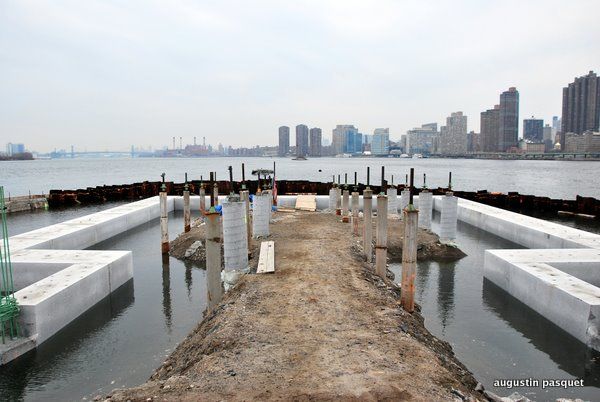

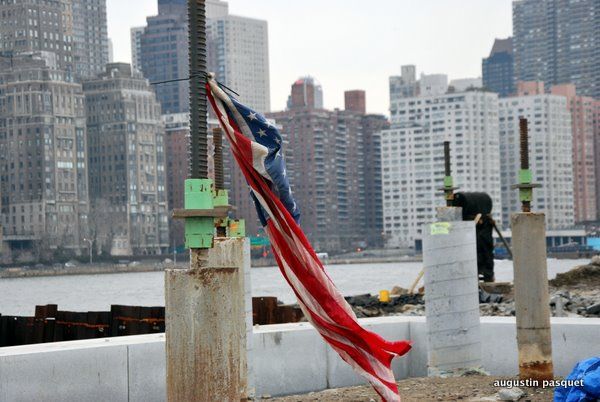

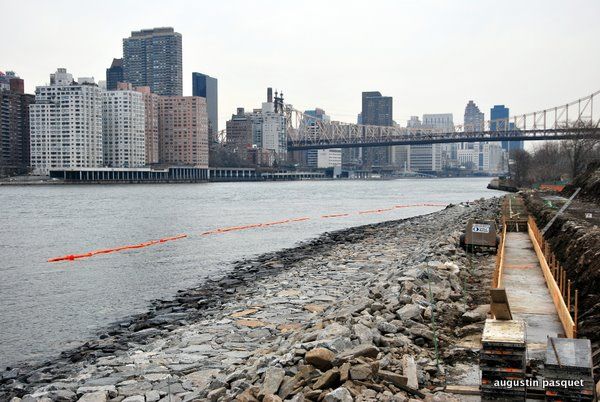
Another shot of the Pepsi-Cola sign!

After the tour, we stopped by the Four Freedoms Park office, to see the model and some of the original drawings by Louis I. Kahn:
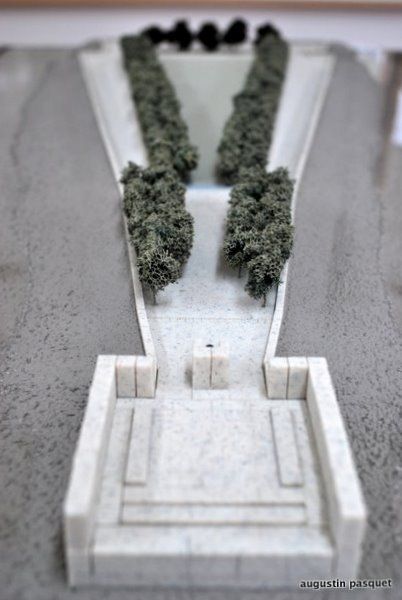
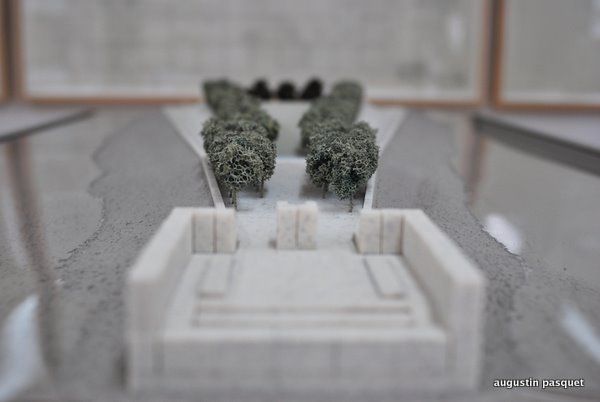

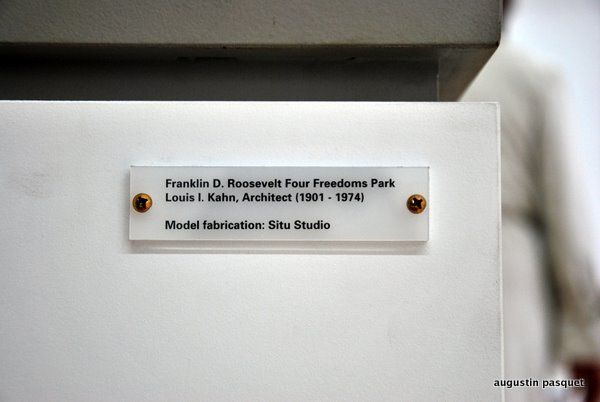

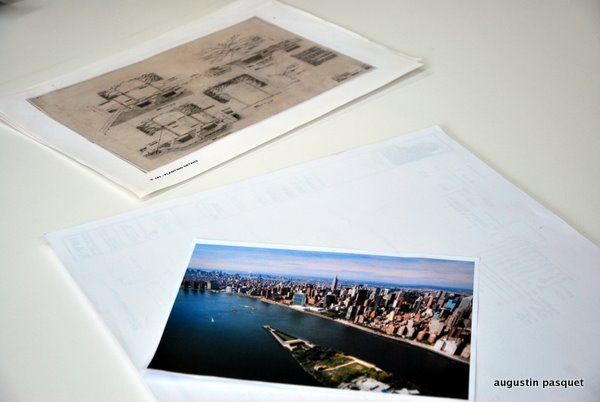
Here is a more detailed rendering of the park:
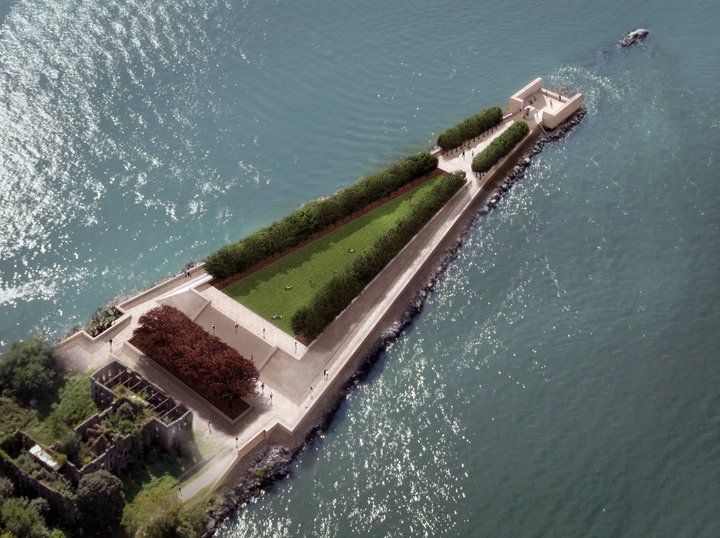
And a picture of Lou, the seal that sometimes emerges on the rock on the upper right, observing the construction and goings-on!
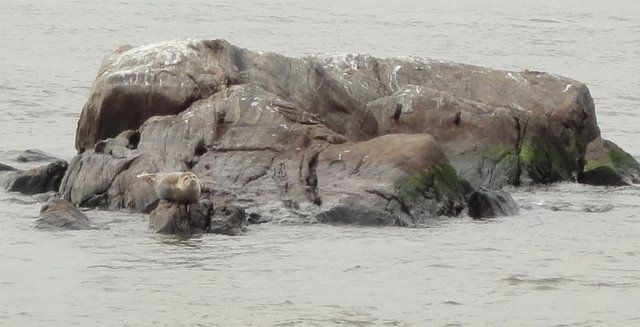
For more information on the Four Freedoms Park, check out their website or become a fan on Facebook. The foundation still needs help to finish the park (and hopefully rehabilitate the smallpox hospital): here’s how to get involved or donate.
Get in touch with the author @untappedmich.
Subscribe to our newsletter